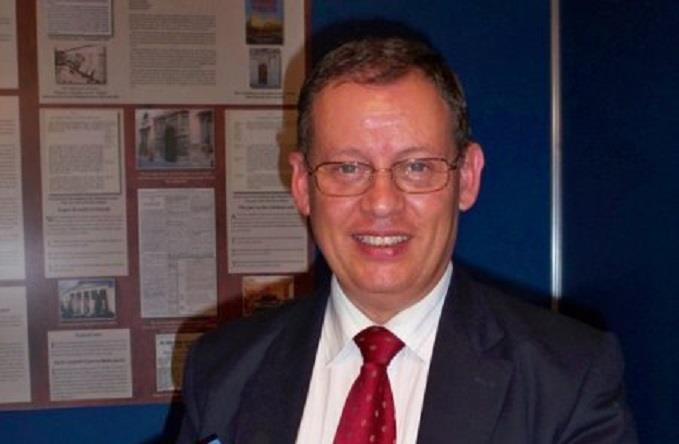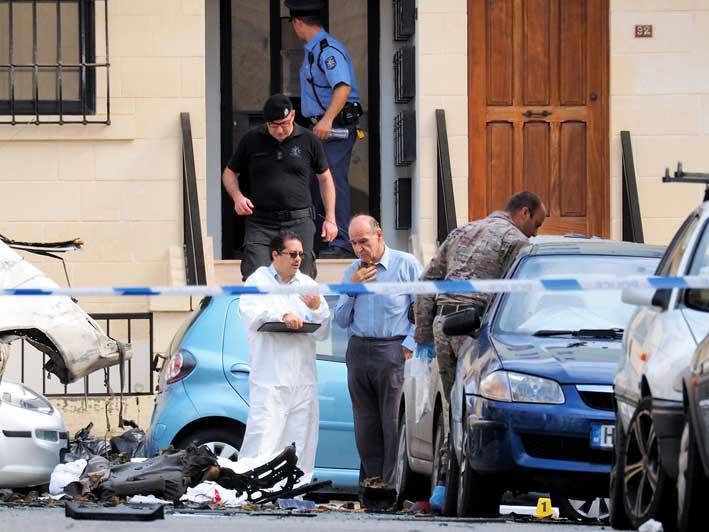A forensic expert believes that John Camilleri, the man who was blown up in his car in Bugibba on Monday, was likely being followed by the person holding the trigger.
Mr Camilleri, 67, died when his Mitsubishi Pajero blew up at around 7am in Triq Paderborn. The victim was the owner of S&S Bathrooms and was also involved in property dealings. No one else was killed or injured in the blast but bits of the 4x4 flew in all directions, with the roof of the vehicle ending up on the roof of a nearby building.
Dr Anthony Abela Medici (below), a former director of the Forensic Science Laboratory, told The Malta Independent yesterday that he believes that the victim was followed and that the bomb was detonated at a point when not many people were in the vicinity. Asked how he had come up with this theory, Dr Abela Medici said that he believed that sinced this was a targeted killing, the perpetrator would likely not have been so irresponsible as to rig the bomb to blow up anywhere, such as in a crowded area, causing mass casualties.

“The danger of having an explosive device go off in a populated area is immense,” he explained, adding that the car itself would essentially become part of the bomb. “The area around the car can be showered with shrapnel. The roof of the car reportedly ended up on the roof of a five storey building and it could have killed or maimed someone.”
The forensics expert added, however, that even if the bomb was detonated by a person who had a visual on Mr Camilleri’s car it could have still injured innocent bystanders. “The person holding the trigger might have not seen a kid running out of a doorway or someone turning the corner.”

Detonation by phone a common modus operandi
Dr Abela Medici said several car bombs that went off in recent times seemed to have been detonated by mobile phones. The bomb is set off when the bomber calls another phone that is attached to the device. “This is a common modus operandi lately but there are many ways to detonate a device, such as detonators that activate with certain movements. Some bombs may be designed to go off when the car goes up or down an incline, but this was probably not the case here because Bugibba is full of ups and downs.”
The former crime scene investigator said in recent cases bombs had been attached to the underside of the target vehicle. As such the body of the vehicle offered some degree of protection to the intended targets, who almost always lost their legs but did not always die. This happened in the most recent car bombing case that took place in Marsa in September.
“However, from what I have read, it seems that in the Bugibba case the bomb was placed inside the car. This means that the driver lost that little protection and sustained more damage.”

Crime scene should be preserved
Dr Abela lamented the fact that several bystanders had disrupted the crime scene in the immediate aftermath of Monday’s blast. This, he says, could have destroyed vital evidence.
“It is clear from pictures and videos taken shortly after the incident that bystanders were walking around the crime scene before the law enforcement people arrived. People could have unknowingly picked up important pieces of evidence on their shoes and carried them away. This could include traces of the explosive used, parts of the detonator or possibly part of a sim card, which could be vital for investigators to identify the bomber.”
The priority is always to save lives and bystanders should assist any injured persons, but they should stay away if the victims are dead and nothing can be done for them. “The crime scene has to be preserved. I encountered this problem many times along the years.”

Back to the 80s?
Dr Abela Medici said the apparent resurgence of car bomb attacks was definitely very concerning. There have been nine bomb attacks since 2010. “The first question is why this is happening? Why should a person use a bomb, as indiscriminate as it may be, to get rid of another person? Another question is whether there is a person, or network of persons, specialising in manufacture of explosive devices.”
The forensics expert recalled the spate of bombings that gripped Malta in 1984. “There were 24 bombings in the space of just three months. The bombs back then were different but many of them seemed to have been manufactured by the same hands.”
He added: “I do not know what material is being used because I am no longer part of investigations. It might be quarry material, pyrotechnic material or hard explosives, like TNT and Semtex. If it is the latter than it is definitely more worrying.”